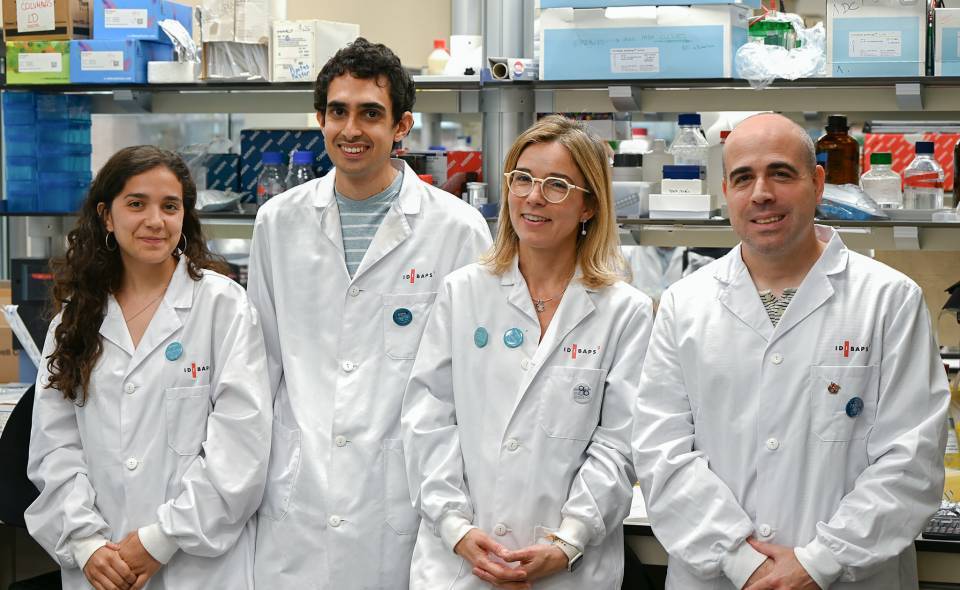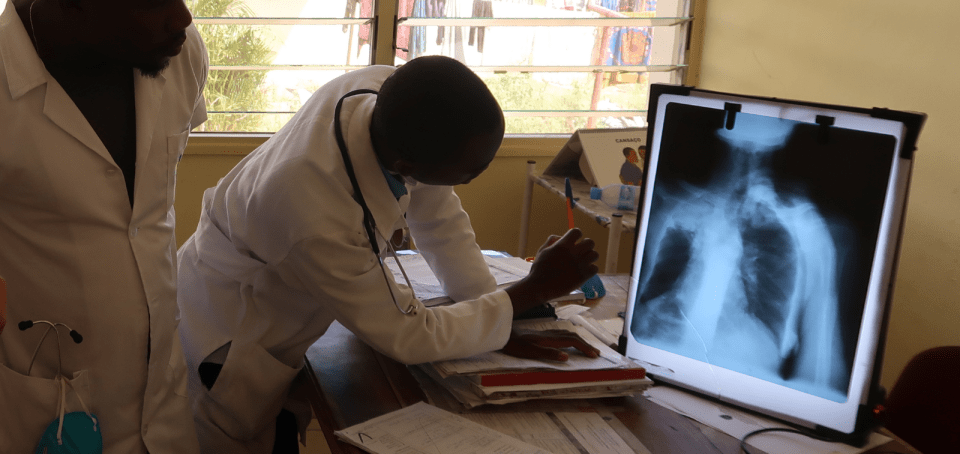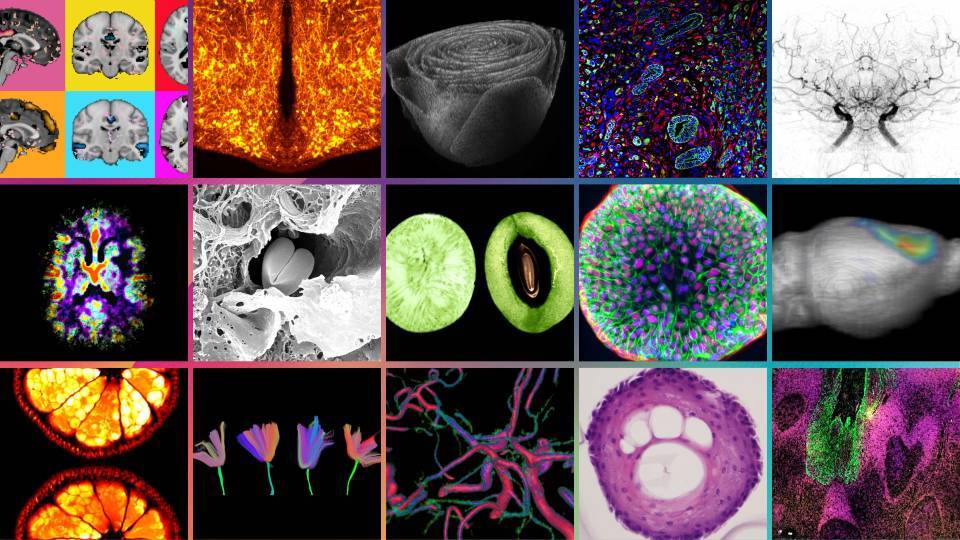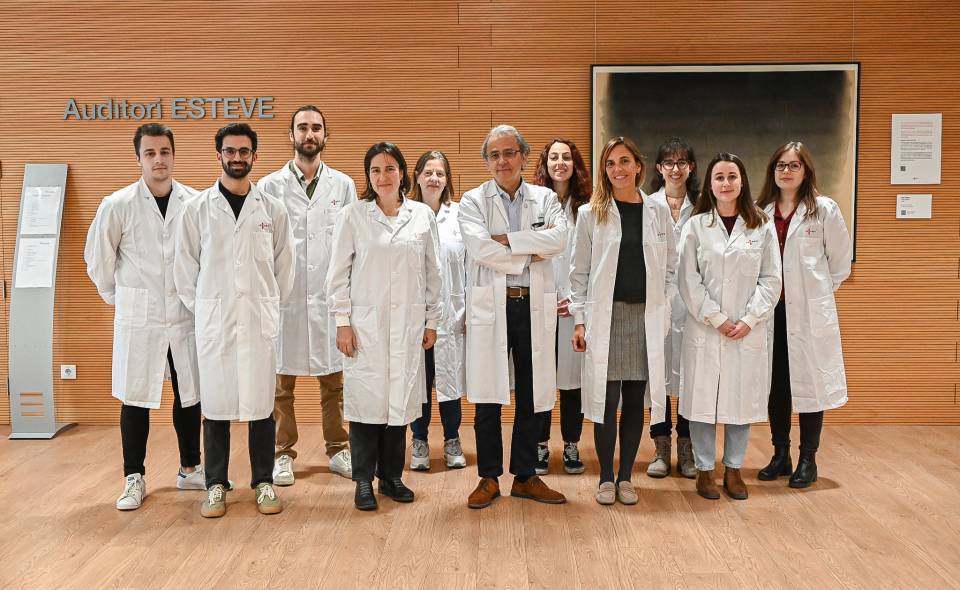Its ability to recreate the human tumour microenvironment makes it a valuable tool for further exploration of follicular lymphoma and other related diseases.
The study, coordinated by Patricia Pérez-Galán, director of the IDIBAPS Microenvironment in lymphoma pathogenesis and therapy group and researcher of the CIBER of Cancer (CIBERONC), is the result of international collaboration within the European IMLINFO project (INTERREG-POCTEFA), with the participation of researchers from the Centre de Recherches en Cancérologie de Toulouse (France).
Follicular lymphoma is a type of blood cancer that develops in the lymphoid organs. This type of cancer represents 15-20% of the cases of non-Hodgkin lymphoma, and it is the most common indolent type. However, it has the potential to transform into more aggressive and incurable forms. Current research aims to better understand the behaviour of lymphoma and find more effective strategies to treat it, especially in those cases with early relapses and transformation to aggressive lymphoma.
Replicating the human tumour microenvironment
The study in Blood Cancer Journal focused on the development of a new model known as FL-PDLS (Follicular Lymphoma-Patient-Derived Lymph Node Spheroids). This model is able to replicate the disease, since it simulates the interaction between the patient’s own tumour cells and their immune microenvironment. This capacity is crucial since the tumour microenvironment is one of the main factors that contribute to treatment failure and relapse, and has so far been difficult to replicate in in vitro models.
“The FL-PDLS model is a new 3D system where tumour cells proliferate and interact with their immune microenvironment in a wide timeframe, which allows for functional studies to be carried out and new vulnerabilities to be identified in a robust system”, says Patricia Pérez-Galán. “In addition, it has proven to be a valuable tool for testing chemotherapy and immunotherapy treatments—given the presence of autologous T-lymphocytes—as well as for screening new drugs and therapies in a personalized way due to its multiplexed format”, she adds.
Improving the treatment of follicular lymphoma
The FL-PDLS model has proven useful not only for gaining a better understanding of follicular lymphoma, but also for validating the efficacy of current treatments and proposing new therapeutic approaches.
In particular, the study discovered that an immunoregulatory protein, galectin-9, limits the efficacy of the anti-CD20 rituximab, the standard treatment for this type of lymphoma. Blocking galectin-9 markedly improves the efficacy of the drug, suggesting that this protein could be a novel immunotherapeutic target in follicular lymphoma.
The publication of this study represents a significant step towards a better understanding and treatment of follicular lymphoma. The development of the FL-PDLS model and the discovery of the role of galectin-9 in treatment resistance offer new perspectives in the treatment of the disease.
Article reference:
Dobaño-López C*, Valero JG*, Araujo-Ayala F, Nadeu F, Gava F, Faria C, Norlund M, Morin R, Bernes-Lasserre P, Arenas F, Grau M, López C, López-Oreja I, Serrat N, Martínez-Farran A, Hernández L, Playa-Albinyana H, Giménez R, Beà S, Campo E, Lagarde JM, López-Guillermo A, Magnano L, Colomer D, Bezombes C, Pérez-Galán P. Patient-derived follicular lymphoma spheroids recapitulate lymph node signaling and immune profile uncovering galectin-9 as a novel immunotherapeutic target. Blood Cancer J. 2024 May 2;14(1):75. doi: 10.1038/s41408-024-01041-7.




